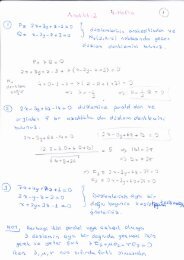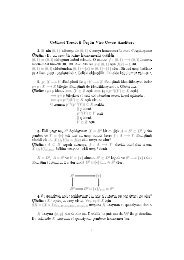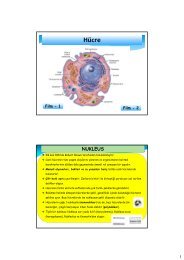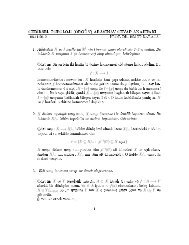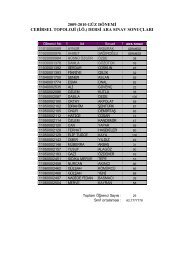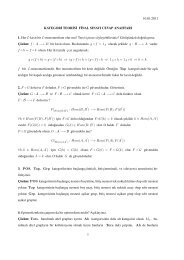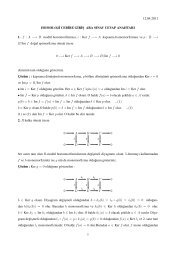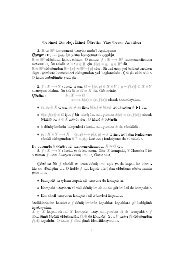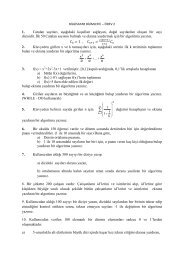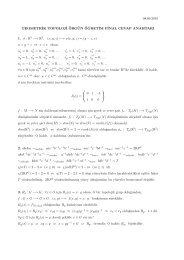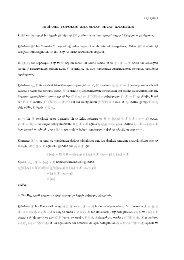MCS 351 ENGINEERING MATHEMATICS SOLUTION OF ...
MCS 351 ENGINEERING MATHEMATICS SOLUTION OF ...
MCS 351 ENGINEERING MATHEMATICS SOLUTION OF ...
You also want an ePaper? Increase the reach of your titles
YUMPU automatically turns print PDFs into web optimized ePapers that Google loves.
sin z is defined and differentiable at all points of C. Hence sin z is entire.<br />
cosh z = ez + e −z<br />
⇒ d 2 dz coshz = ez − e −z<br />
= sinh z<br />
2<br />
cosh z is defined and differentiable at all points of C. So cosh z is entire.<br />
sinh z = ez − e −z<br />
⇒ d 2 dz sinhz = ez + e −z<br />
= cosh z<br />
2<br />
sinh z is defined and differentiable at all points of C. Therefore sinh z is entire.<br />
2. Let z = x + iy. Then we can write<br />
cos z = cos x cosh y − i sin x sinh y<br />
Re(cos z) = cos x cosh y. Let u(x, y) = cos x cosh y and v(x, y) = 0.<br />
u x = − sin x cosh y,<br />
u y = cos x sinh y,<br />
u xx = − cos x cosh y<br />
u yy = cos x cosh y<br />
Then we obtain that ∇ 2 u = u xx + u yy = − cos x cosh y + cos x cosh y = 0.<br />
v xx , v yy = 0 because v(x, y) = 0. So, ∇ 2 v = v xx + v yy = 0.<br />
Hence Re(cos z) is harmonic.<br />
We know that<br />
sin z = sin x cosh y + i cos x sinh y<br />
Then Im(sin z) = cos x sinh y. Let u(x, y) = cos x sinh y and v(x, y) = 0.<br />
u x = − sin x sinh y,<br />
u y = cos x cosh y,<br />
u xx = − cos x sinh y<br />
u yy = cos x sinh y<br />
∇ 2 u = u xx + u yy = − cos x sinh y + cos x sinh y = 0.<br />
Because of v(x, y) = 0, v xx and v yy is zero. Hence ∇ 2 v = v xx + v yy = 0. Im(sin z) is harmonic.<br />
3. We know that cosiz = coshz and siniz = isinhz. Furthermore cos z = cos x cosh y − i sin x sinh y.<br />
cosh z = cos iz = cos(i(x + iy)) = cos(−y + ix) = cos(−y) cosh(x) − i sin(−y) sinh(x)<br />
= cos y cosh x + i sin y sinh x<br />
We know that sin z = sin x cosh y + i cos x sinh y Then,<br />
sinh z =<br />
sin iz<br />
i<br />
= −i sin(iz) = −i sin(−y + ix) = −i(sin(−y) cosh(x) + i cos(−y) sinh(x))<br />
= −i(− sin y cosh x + i cos y sinh x) = cos y sinh x + i sin y cosh x.<br />
4. We know that cos iz = cosh z and sin iz = i sinh z. If we use<br />
cos(z 1 + z 2 ) = cos z 1 cos z 2 − sin z 1 sin z 2<br />
19



